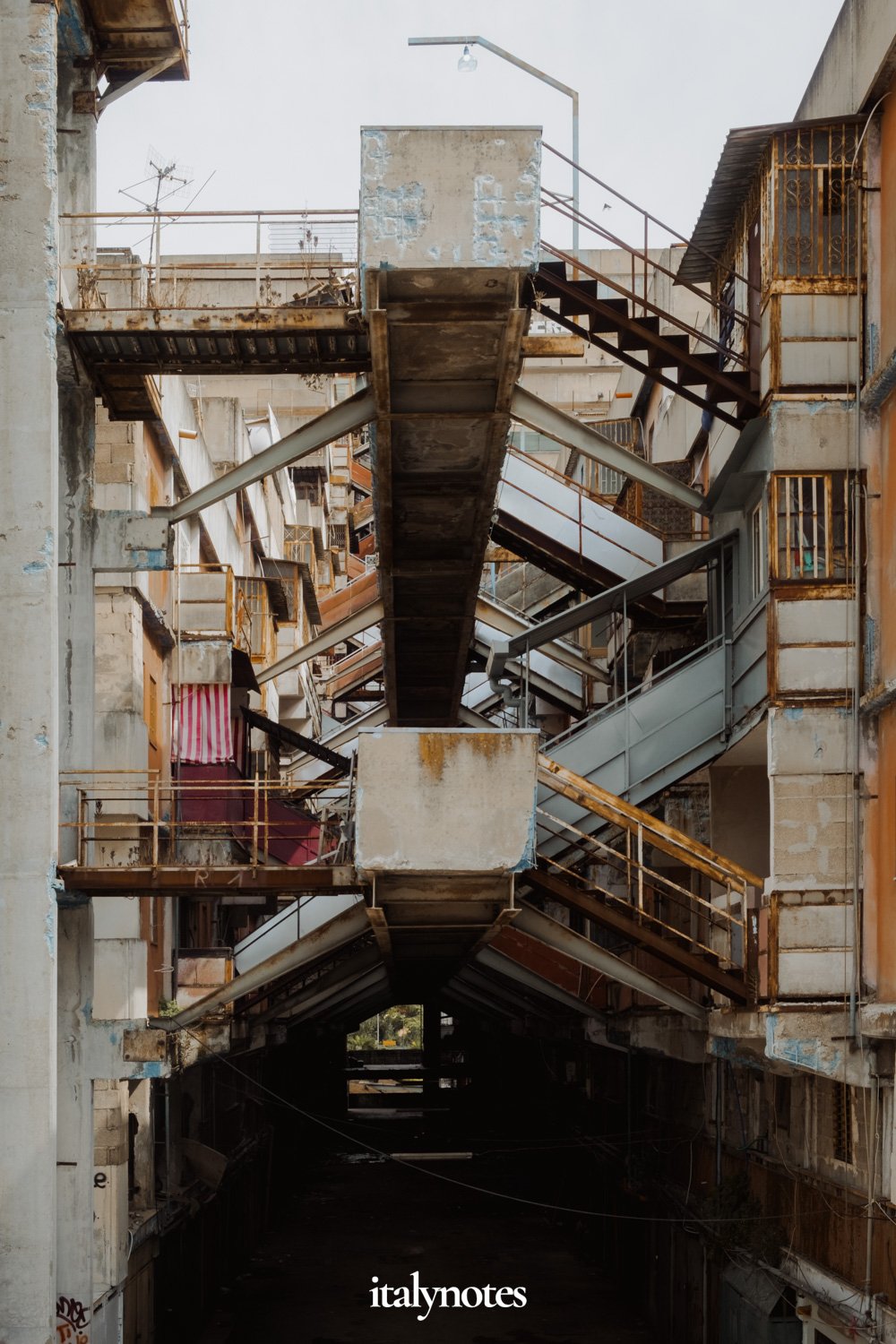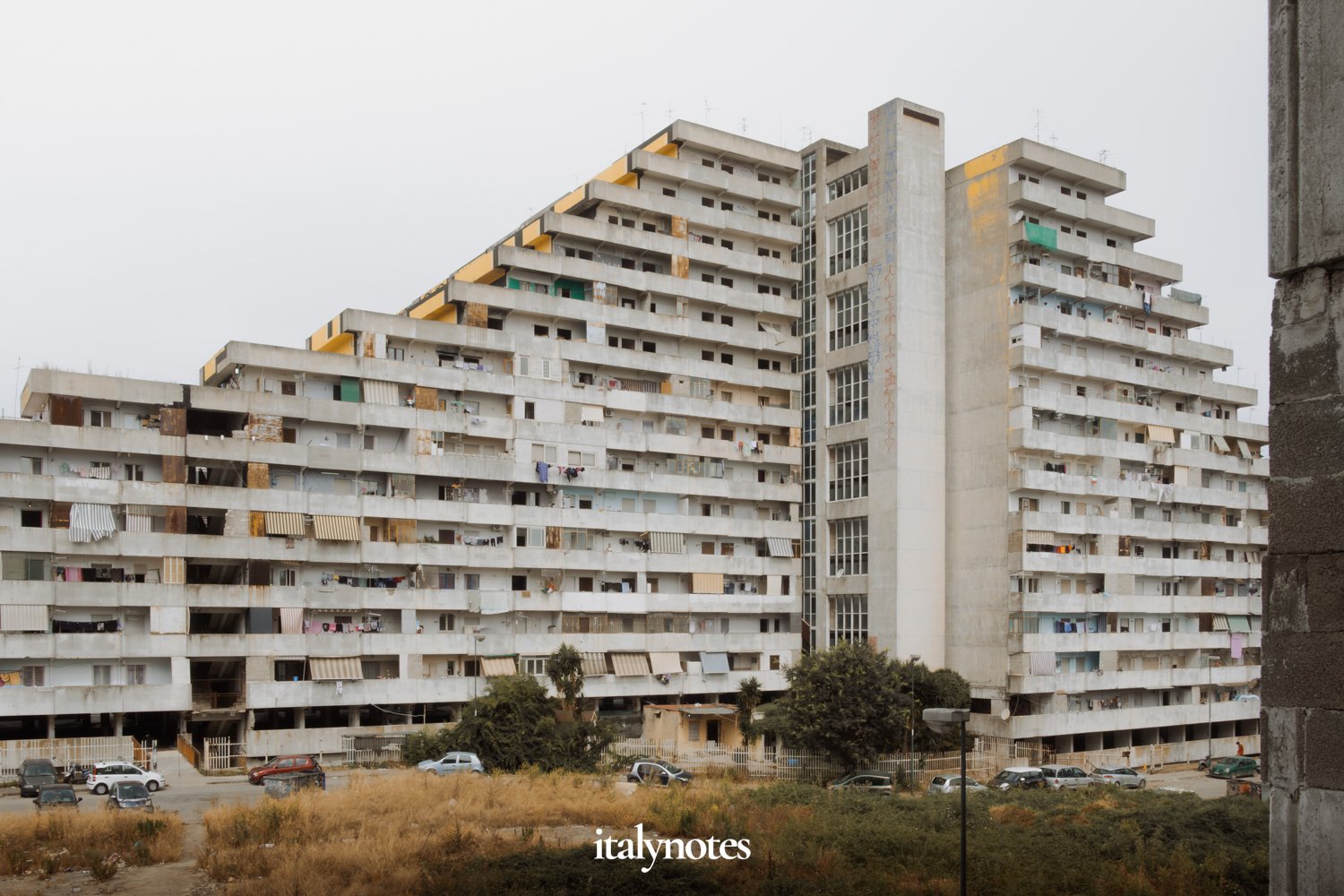
Le Vele di Scampia: brutalist architecture in Naples
Le Vele di Scampia: brutalist architecture in Naples
Last updated: April 2020
I first learned about Scampia, a neighborhood in northern Naples, during my second year of university. In preparation for my exams, I had to read an article discussing the distinctive architecture of the "Le Vele di Scampia" or the "Sails of Scampia." The (social) concept behind the iconic structures and the story of their downfall intrigued me. And so, ever since reading that article, I've been eager to see the iconic buildings for myself. Finally, last week, I had the opportunity to make the trip.
Early in the morning, I hopped on the Linea 1 metro from Toledo to Piscinola, a journey of about 40 minutes. From the Piscinola metro station, it was just a 3-minute walk to Le Vele. As I approached the buildings, I was shocked by their poor condition. Seeing people live in these deteriorating structures was quite a revelation. It's a clear symbol of governmental failure and neglect. Sadly, this is a recurring sight throughout Scampia.

Arriving at "Le Vele di Scampia" early in the morning.
Architectural concept
Scampia came into existence as a suburban area during the 1960s. The neighborhood is a direct outcome of the then-new "Legge 167" (Law 167). This law provided municipalities with a new spatial planning tool to define areas for public housing and criteria for developing subsidized housing. Consequently, people frequently refer to Scampia as "the 167."
The development of Scampia peaked in the 1970s and 1980s, with high-rise residential blocks, wide boulevards, and parks being built. The initial seven triangular-shaped "Vele" buildings are undoubtedly the most recognizable structures from this period. For the architectural concept, the architect Franz di Salvo took inspiration from Le Corbusier's idea of Unité d'Habitation: a vertical garden city where hundreds of families could socialize and form a community. Furthermore, Di Salvo wanted to incorporate communal hubs, playing fields, and other social amenities. However, these envisioned community services never materialized.
View from inside one of the "Vele" buildings.
Decline of the neighborhood
In the wake of the devastating Irpinia earthquake in 1980, countless families were left homeless. Many of these families sought refuge by squatting in the huge "Vele" apartment complexes. As the government turned a blind eye to this situation, more individuals became drawn into this practice. Often they received assistance from the Neapolitan crime syndicate Camorra.

View through one of the many broken windows of the "Vele".
Through these actions, the Camorra gradually gained control over the "Vele," transforming the complexes into their own territories for drug distribution. They even went so far as to install large metal gates on specific walkways and staircases, turning the "Vele" into a fortified stronghold. Drug dealers could lock these gates to buy time to escape in case the police showed up.
As a result of the drug trade, combined with the lack of commercial districts, entertainment venues, an unemployment rate of over 50%, and the total absence of the police, the Scampia neighborhood rapidly fell into decline.
Internal corridors and pathways (left) and one of the large metal gates installed by the Camorra (right).
In the years that followed, the situation spiraled out of control. The streets of Scampia became an open marketplace for the sale and use of heroin and cocaine. The years 2004 and 2005 even saw a violent conflict erupt between different Camorra gangs. The war, known as the "Scampia feud", resulted in over 70 murders. Some of today's popular mafia series draw inspiration from this tumultuous period.

Close-up of some of the internal corridors and pathways.
Redevelopment program
Partially due to these movies and TV series, Scampia and the "Vele" complex became widely associated with drugs, prostitution, and organized crime. However, it's important to acknowledge that certainly not everyone in Scampia is involved in criminal activities! Many families find themselves residing here out of necessity due to limited alternatives.
Luckily for them, the government has initiated a redevelopment plan. This program aims to relocate current "Vele" residents to new apartment buildings and demolish the existing structures. Moreover, the initiative aims to transform the area by introducing shops, arcades, and public squares. Time will tell if this initiative can improve the neighborhood’s reputation.

The "Vele" early in the morning.







